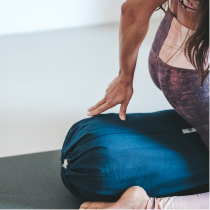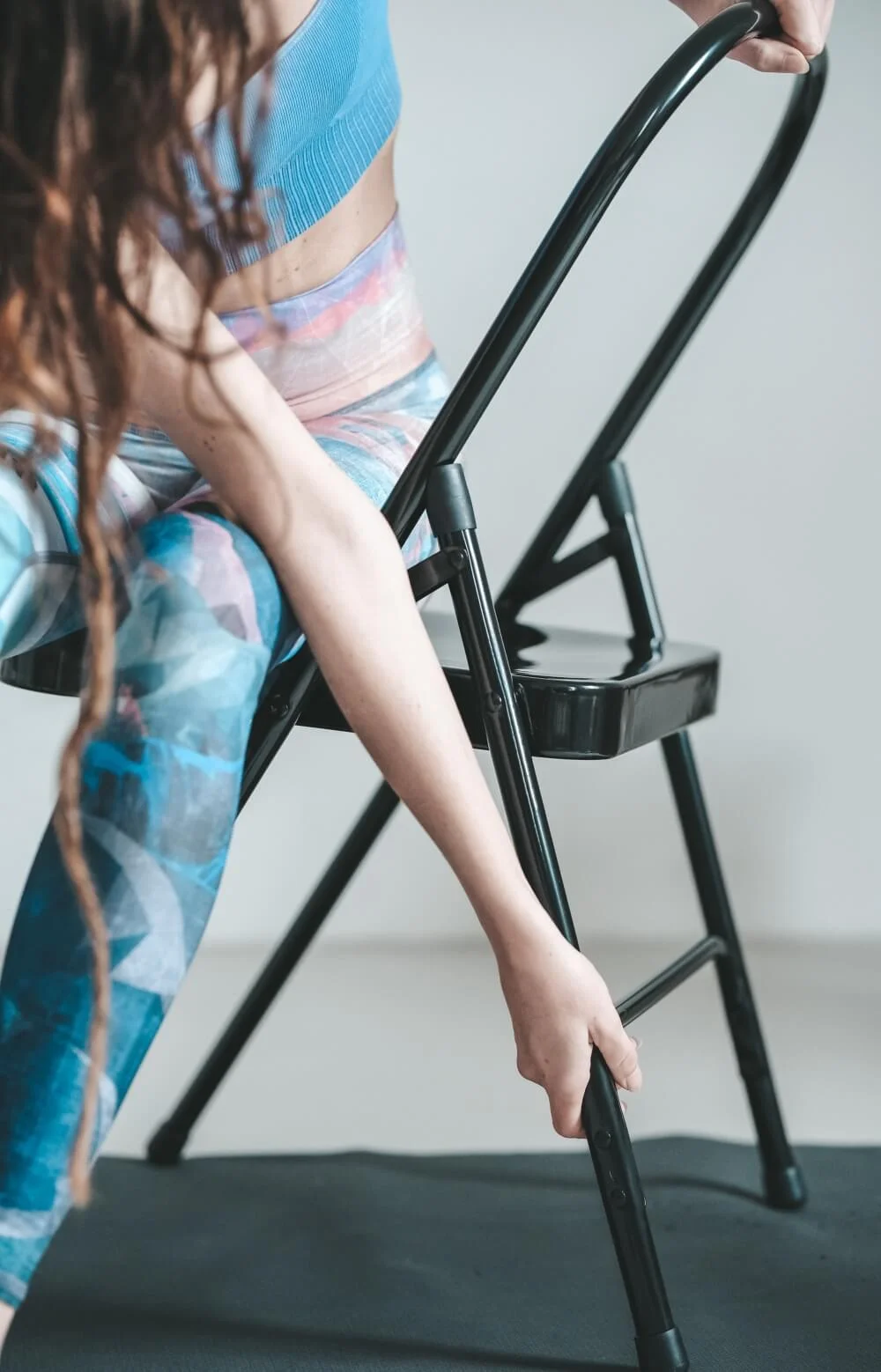"If you persistently practice yoga every day, you will be able to deal with life's upheavals steadfastly and maturely." B.K.S. IYENGAR
In yoga practice, we know various types of asanas; standing asanas, forward bends, backbends, balance positions, and twisting yoga poses. Twisting poses encompass a range of intensity - from standing to lying down, and from less advanced to more advanced variations. Using yoga props, like bolsters or chairs, during twist poses can facilitate, support, and deepen your yoga practice.

Yoga for the Spine: Yoga Exercises with Twists to Relieve the Lower Back
The word "parivrrta" in Sanskrit means to turn around or revolve. When your yoga teacher starts a warm-up sequence with gentle twists, know that the positions might be challenging at first, but later on you will find stability in them. Twisting yoga poses offer great benefits of reducing stress and increasing energy levels for the whole day. Consistent practice is essential for developing the ability to create space in the body, enabling deeper twists. By directing your breath towards areas of tension, you can gradually deepen your twists over time, leading to more advanced positions such as Parivrtta Trikonasana.
Twisting yoga poses are a crucial part of our yoga practice, particularly beneficial for relieving tension in the lower back, especially following backbends.
Yoga Twists or Parivrtta
Twists involve rotational movements, where we rotate around our axis and spine.
To perform twists effectively, maintain a straight spine and a stable, parallel pelvis. The rotation primarily occurs from the thoracic vertebrae and is accompanied by exhalation, first twisting to the right and then to the left.
Twisting Yoga Asanas For Energy Boost
During twist practice, we relieve and neutralize tension in the spine, while our organs benefit from increased blood flow. Renowned Indian yoga master B.K.S. Iyengar describes twists as a "squeeze and soak" action: as we twist, our organs are compressed, and upon release, fresh blood flows in, carrying oxygen throughout the body. This cleansing effect refreshes our organs and stimulates blood circulation, leaving us feeling invigorated and energized after practicing twists.
With regular exercise, the spine becomes more flexible, creating space around the groin and hips. For beginners, twists can initially cause restlessness and breathing difficulties because of the compression in the chest. However, with persistence and regular practice, you can overcome these challenges and experience peace of mind not only during yoga practice but also in your daily lives.
5 Benefits Of Twisting Asanas For Your Body
1. Flexibility
Twists help to stretch the muscles of the back, hips, and shoulders, which increases the flexibility and mobility of the body.
2. Spine Strengthening
By doing twists correctly, you can strengthen your spine and back muscles, which can reduce the risk of back injury and improve your posture.
3. Body Detox
They stimulate the functioning of internal organs such as the liver, kidneys, and intestines, which helps to eliminate toxins from the body and improves digestion.
4. Calming The Mind
Twisting yoga poses are often associated with breathing and meditation, which can help calm the mind, reduce stress, and increase feelings of relaxation.
5. Strengthening The Abdominal Muscles
When you do twists, you activate your abdominal muscles, which can lead to a stronger and more defined abdominal area.
Even though the body twist asanas are among the more demanding yoga positions, they can be practiced even by complete beginners.
A chair or bolster is often used for seated twists. This yoga accessory is not only intended for beginners but is also used by more advanced practitioners and those who want to deepen their yoga practice.
Benefits Of Chair Or Bolster For Improved Twisting Yoga Practice:
- Offers support, while at the same time enabling our pelvis to be flat and stable.
- It allows for a deeper twisting of the upper body above the navel, directing awareness to areas that require expansion and relaxation.
- Supports sustained engagement in challenging twists, longer durations in moderately demanding and intense twists. Over time, this practice cultivates a calm, relaxed, and focused breath.
- Adaptable particularly during menstruation, incorporating gentler and less intense twists into our yoga routine is beneficial and accommodating.



